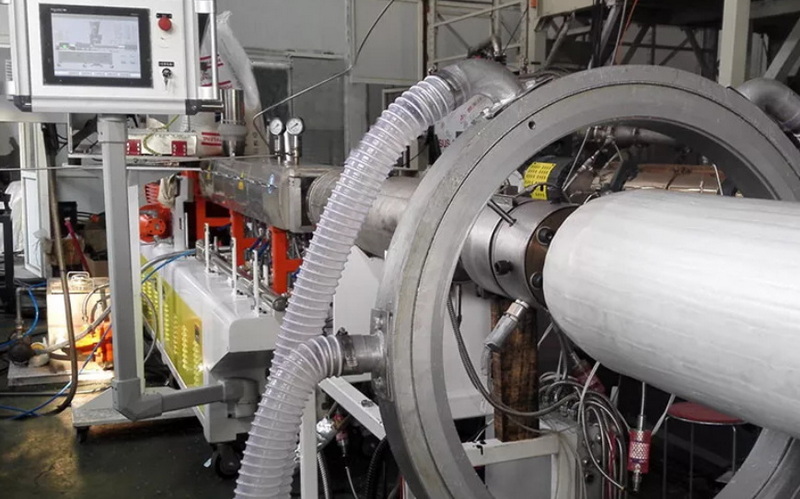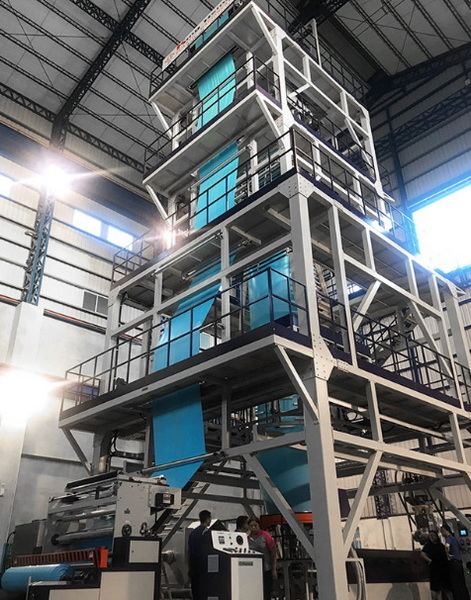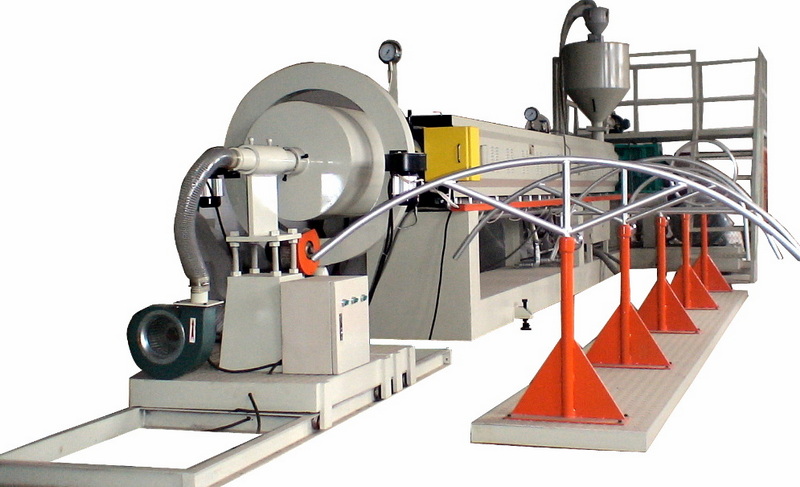Content Menu
● Understanding HDPE Sheet Line Extrusion Machinery
● Average Price Range of High-Quality HDPE Sheet Line Extrusion Machinery
>> Factors Influencing Costs
● Technological Innovations Shaping the Industry
>> 1. Advanced Automation and Control
>> 2. Sustainability-Driven Upgrades
>> 3. Modular Design Trends
● Operational Considerations for Buyers
>> 1. Maintenance Best Practices
>> 2. Cost Optimization Strategies
● Market Trends and Growth Projections
>> 1. Regional Demand Analysis
>> 2. Emerging Applications
>> 3. Competitive Landscape
● Conclusion
● Frequently Asked Questions (FAQs)
>> Q1: How does recycled HDPE affect extrusion machine performance?
>> Q2: What certifications ensure extrusion machinery quality?
>> Q3: Can one machine produce both HDPE pipes and sheets?
>> Q4: What's the ROI period for a $300,000 extrusion line?
>> Q5: How do temperature fluctuations impact production?
● Citations:
The demand for high-quality HDPE (High-Density Polyethylene) sheet line extrusion machinery continues to surge, driven by its applications in packaging, construction, automotive, and environmental protection industries. This article provides an in-depth analysis of the machinery's price range, technological advancements, operational considerations, and market trends, while addressing key questions for buyers.

Understanding HDPE Sheet Line Extrusion Machinery
HDPE sheet line extrusion machinery transforms HDPE pellets into uniform sheets through a multi-stage process:
1. Extruder: Melts and homogenizes raw HDPE material using twin-screw or single-screw systems.
2. Die Assembly: Shapes molten HDPE into flat sheets with precise thickness (0.2–10 mm) and width (up to 4 meters).
3. Cooling System: Chill rolls solidify sheets rapidly to maintain dimensional stability.
4. Cutting Unit: Trims sheets to custom lengths for downstream applications.
Modern systems incorporate digital control panels for real-time adjustments and automated quality monitoring to minimize defects[1][6].
Average Price Range of High-Quality HDPE Sheet Line Extrusion Machinery
The price of HDPE extrusion lines varies significantly based on specifications and features:
| Production Capacity | Price Range (USD) | Key Features |
| 100–150 kg/hr | $50,000–$100,000 | Basic automation; ideal for startups. |
| 150–300 kg/hr | $100,000–$200,000 | Advanced controls; medium-scale output. |
| 300–500 kg/hr | $200,000–$400,000 | Fully automated; energy-efficient designs. |
| 500+ kg/hr | $400,000+ | Customizable; ultra-high-speed production. |
Factors Influencing Costs
1. Production Capacity: High-capacity machines (500+ kg/hr) cost 3–4× more than entry-level models[6][7].
2. Automation: Fully automated lines reduce labor costs but increase upfront investment by 20–30%[3][6].
3. Material Compatibility: Systems processing recycled HDPE or multiple polymers (PP, PVC) cost 15–25% more[1][5].
4. Energy Efficiency: Machines with servo-driven motors save 30% in power costs but add $10,000–$20,000 to the price[6][8].
5. Brand Reputation: Established brands like JWELL and Reifenhauser charge premiums for reliability and after-sales support[3][6].

Technological Innovations Shaping the Industry
1. Advanced Automation and Control
- 3D Simulation Software: Optimizes extrusion parameters (temperature, screw speed) before production, reducing material waste by 12–18%[1][7].
- Inline Quality Sensors: Detect thickness variations (±0.05 mm) and adjust die settings in real time[1][3].
- Remote Monitoring: Enables predictive maintenance, cutting downtime by 25%[3][8].
2. Sustainability-Driven Upgrades
- Recycled Material Processing: Modern lines blend 30–50% recycled HDPE without compromising strength, aligning with circular economy goals[1][5].
- Energy Recovery Systems: Capture waste heat from cooling units, reducing energy consumption by 15–20%[6][7].
3. Modular Design Trends
Manufacturers now offer plug-and-play modules for easy upgrades, such as adding co-extrusion capabilities or wider dies, extending machinery lifespan by 5–8 years[3][6].
Operational Considerations for Buyers
1. Maintenance Best Practices
- Daily Checks: Inspect lubrication levels, gearbox oil quality, and heater insulation resistance[4][8].
- Winter Precautions: Drain cooling water from pumps and molds to prevent freezing damage[4].
- Screw and Barrel Care: Clean residual material after shutdowns and apply anti-rust coatings during long-term storage[4][8].
2. Cost Optimization Strategies
- Leasing Options: Reduce upfront costs by 40–60% through equipment leasing plans[6].
- Used Machinery: Refurbished lines from brands like YeJing offer 30–50% savings while maintaining 80–90% efficiency[6].
- Localized Sourcing: Asian manufacturers provide competitive pricing (e.g., Chinese lines cost 20–40% less than European counterparts)[6][7].
Market Trends and Growth Projections
1. Regional Demand Analysis
- Asia-Pacific: Accounts for 48% of global demand (2025), driven by infrastructure projects in India and China[2][7].
- North America: 6.2% CAGR growth (2025–2030) fueled by recycled HDPE adoption in packaging[2][7].
2. Emerging Applications
- Geomembranes: 18% annual growth in landfill liner production using 2–3 mm HDPE sheets[5].
- Lightweight Automotive Parts: 1.2 mm HDPE sheets replace metal components, reducing vehicle weight by 12–15%[7].
3. Competitive Landscape
Top manufacturers like JWELL and Starlinger dominate 35% of the market, focusing on energy-efficient designs and AI-driven extrusion lines[7].
Conclusion
High-quality HDPE sheet line extrusion machinery represents a strategic investment, with prices ranging from $50,000 to over $400,000. Buyers must balance production needs with lifecycle costs, prioritizing automation, energy efficiency, and scalability. As sustainability mandates and technological advancements reshape the industry, manufacturers adopting smart extrusion solutions will gain competitive advantages in global markets.

Frequently Asked Questions (FAQs)
Q1: How does recycled HDPE affect extrusion machine performance?
A: Recycled HDPE requires modified screw designs (higher L/D ratios) and filtration systems to remove contaminants. Properly processed, it can constitute 30–50% of feedstock without compromising sheet quality[1][5].
Q2: What certifications ensure extrusion machinery quality?
A: Look for CE Marking (EU safety standards), ISO 9001 (quality management), and UL Certification (electrical safety)[3][6].
Q3: Can one machine produce both HDPE pipes and sheets?
A: Specialized dies and cooling systems are required. Retrofit kits for dual-functionality cost $15,000–$30,000 but reduce long-term capital expenditure[1][6].
Q4: What's the ROI period for a $300,000 extrusion line?
A: With 300 kg/hr output and 75% utilization, ROI typically occurs in 18–24 months, assuming $2.50/kg sheet pricing[6][7].
Q5: How do temperature fluctuations impact production?
A: Winter operations require preheating barrels to 160–180°C before startup and maintaining ambient temperatures above 10°C to prevent material brittleness[4][8].
Citations:
[1] https://jieyatwinscrew.com/blog/hdpe-pipe-extrusion-line/
[2] https://sites.google.com/view/insight-continuum/hdpe-extrusion-line-market-by-application_1
[3] https://www.jwellextrusions.com/selecting-the-right-hdpe-pipe-extrusion-line.html
[4] https://www.jwellextrusions.com/tips-for-maintaining-plastic-extrusion-equipment-in-winter.html
[5] https://www.sheetcoextrusion.com/hdpe-geomembrane-sheet-extrusion-machinery/
[6] https://www.yjing-extrusion.com/how-to-find-affordable-hdpe-sheet-line-extrusion-machinery-for-your-business.html
[7] https://github.com/laverkyllozc/Market-Research-Report-List-1/blob/main/hdpe-extrusion-line-market.md
[8] https://www.accextrusion.com/news/maintenance-and-cleaning-of-plastic-profile-pipe-extrusion/
[9] https://jydjx.com/common-problems-of-hdpe-plastic-extrusion-line/
[10] https://www.sheetcoextrusion.com/hdpe-plastic-sheet-machinery/
[11] https://jydjx.com/innovations-in-plastic-pipe-extrusion-lines-advancements-in-technology-and-sustainability/
[12] https://dataintelo.com/report/global-hdpe-extrusion-line-market
[13] https://www.parsethylene-kish.com/separsekish/default.aspx?page=Document&app=Documents&docId=11687&docParId=11545
[14] https://www.won-plus.com/blog/plastic-pipe-extrusion-line-maintenance-recommendations_b43
[15] https://www.bogdaplast.com/plastic-extrusion-machine/354.html
[16] https://ms.machinery-hitech.com/blog/detail-121556.html
[17] https://www.coherentmarketinsights.com/industry-reports/high-density-polyethylene-hdpe-market
[18] https://www.jwellextrusions.com/products/sheet-extrusion-line/
[19] https://jydjx.com/important-maintenance-steps-for-maintaining-a-plastic-pipe-extrusion-line/
[20] https://www.alibaba.com/product-detail/_1600896999034.html






















